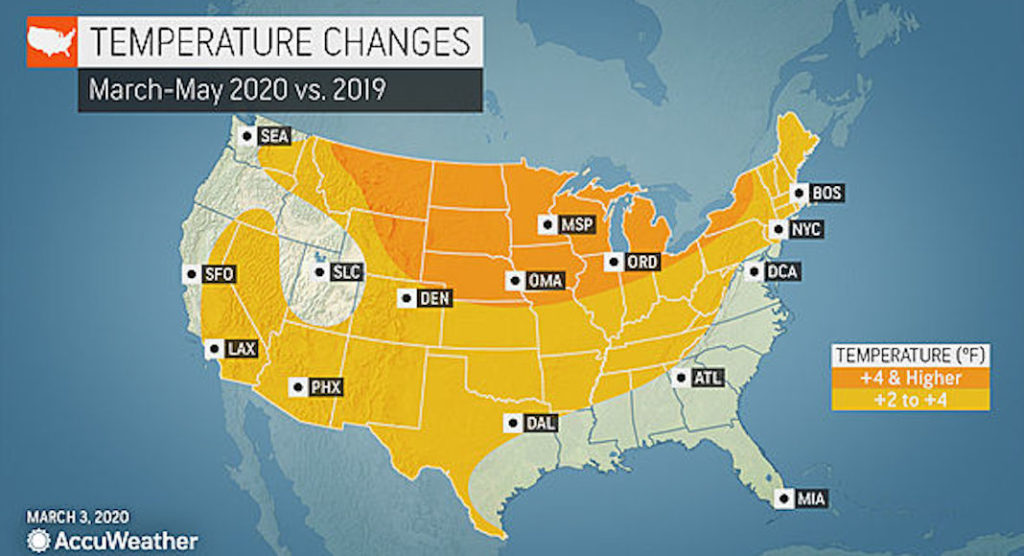Study is the latest in a limited but growing body of research, not all of which has been peer-reviewed, that examines the effect of weather on the spread of the SARS-Cov-2 virus, which causes the COVID-19 illness.

Texas Border Business
AccuWeather Global Weather Center – A team of researchers unveiled the results of a new study last week that looked at how temperature and humidity may affect the transmission of COVID-19, the illness caused by the new coronavirus.
According to the researchers’ findings, “High temperature and high relative humidity significantly reduce the transmission of COVID-19.” An increase of just one degree Celsius and 1% relative humidity increase substantially lower the virus’s transmission, according to the data analyzed by the researchers.
The study is the latest in a limited but growing body of research, not all of which has been peer-reviewed, that examines the effect of weather on the spread of the SARS-Cov-2 virus, which causes the COVID-19 illness.
The researchers studied 100 different Chinese cities that each had more than 40 cases of COVID-19 from Jan. 21 to 23. According to AccuWeather Senior Weather Editor and Meteorologist Jesse Ferrell, the decision to study transmission on those dates was critical because that time period was before China intervened on Jan. 24 to stop the spread of the virus. Analyzing that timeframe allowed researchers to observe the natural spread of the virus before public health measures, which have since helped reduce the spread drastically in China, were implemented.
That step was one of several sound methods taken by authors Jingyuan Wang, Kai Feng, Weifeng Lv of Beihang University, and Ke Tang from Tsinghua University, according to Ferrell. He also commended the authors’ accounting for GDP per capita, which normalized the differences in health care facilities, and the normalizations for population density.
The paper showed that the direct impacts of air temperatures and humidity levels could be seen plainly in the severity of outbreaks during the earlier stages of the virus spread.
“In the early dates of the outbreaks, countries with relatively lower air temperature and lower humidity (e.g. Korea, Japan, and Iran) saw severe outbreaks than warmer and more humid countries (e.g. Singapore, Malaysia, and Thailand) do,” the researchers wrote.













